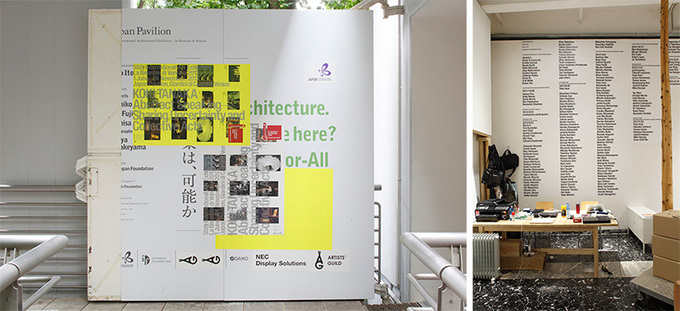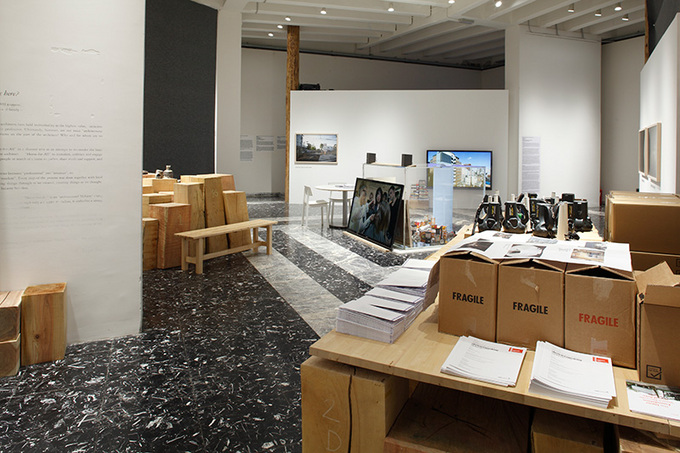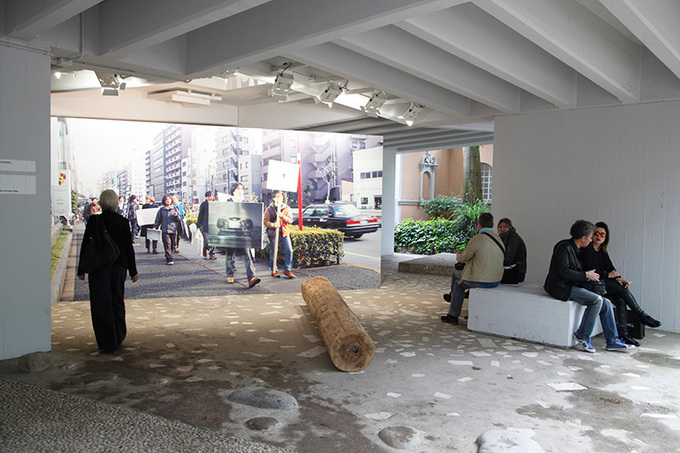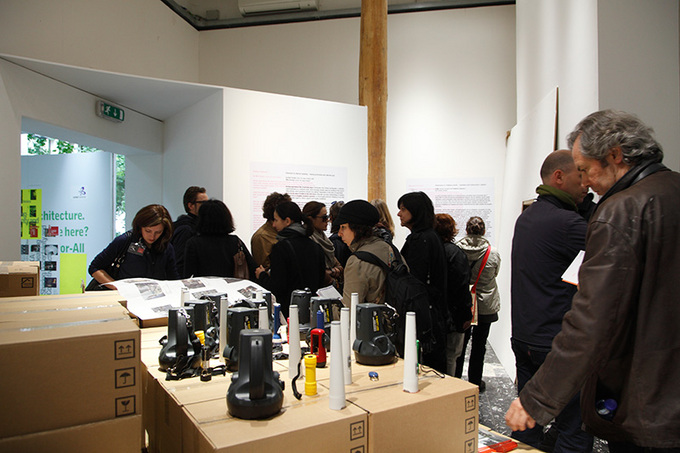Exploring the Role of Art in a Post-Disaster Society--The Potential of Conceptual Art Seen in the "abstract speaking - sharing uncertainty and collective acts" Exhibition
Yuko Hasegawa
Chief Curator, Museum of Contemporary Art Tokyo
The Venice Biennale upholds a unique set of evaluation criteria and politics. The exhibiting artists reflect the conflict resulting from the competing forces of political, economic and cultural globalization on the one hand and extreme local diversity on the other. Meanwhile, the exhibition's original set of values shaped and developed within the Western aesthetic regime of art since 1820 remain firmly intact to this day. Its distinct standard still conforms to these values, regardless of variations in methodologies or main themes.
The Venice Biennale assesses the exhibits based on the following criteria: A critical perspective on political and social issues and the artistic skills both to express the critique in abstract terms and to refine it to such a level that it is acknowledged and appreciated as an intellectually and emotionally engaging proposal.
The artist Koki Tanaka presented the exhibition "abstract speaking--sharing uncertainty and collective acts" in the Japan Pavilion at the 55th International Art Exhibition of the Venice Biennale, and in this work he was most concerned about the distance between himself and the subject matter. This attitude is represented in the title, "abstract speaking."
The curator Mika Kuraya had a curatorial intention to re-examine Japan's post-quake conditions, the functions and meanings of community and society, and the role of art. Tanaka has actually lived in Los Angeles, USA, since 2009 and so was not in Japan to experience the 2011 earthquake and tsunami first-hand. In other words, he was merely indirectly affected by the disaster. Having these circumstances, he faced the challenge of incorporating Kuraya's aspirations into this exhibit, and eventually arrived at the "solution," which turned out to be the cumulative record of a series of experiments. The work has also become a turning point for the artist.
The common theme presented in the nine projects including the previous works is collective acts--the sharing of an experience and the tension, dialogue and empathy generated in the process. In his art practice, Tanaka has used multiple media to give a new twist to the original meaning of objects and created new images or contexts through accidental or improvisational arrangement of objects.
What he has found it remarkable in the recent projects of collaborative work was the diversity of phenomena--such as communication, miscommunication, and even failure--that emerged from the process of people working towards a single, common goal or from the sharing of an experience. The subtle implications of that and the speculation about the things that are loosely shared have proved to be one of the greatest appeals of this show.
The exhibit consists of videos documenting the nine projects, wall texts and objects referencing these projects, such as boxes, ceramics, books and drawings while also retaining some elements of Japan's presentation at the International Architecture Exhibition of the previous year's Venice Biennale. These items are placed seemingly at random but the configuration does maintain the slightest hint of rhythm that keeps the array of objects from becoming a jumble. Compared to Tanaka's previous installations, which had the appearance of spontaneity but also a definite rhythm within the given space, the composition of "abstract speaking" can be described as rather chaotic and crowded.
Some of the collective acts shown in the videos, such as the hair dressers, potters and poets working together, are easy enough to understand, but others can be simply baffling without the descriptive texts. For instance, there is footage of a group of people holding books in their arms ascending and descending the emergency stairs in a quiet protest, or of people assembling in a room on a certain floor of a building and looking at the view together. The latter was an activity that was actually conducted in Rotterdam and the participants were not informed the room they were standing in was at the same height as the tsunami that hit Fukushima in March 2011. These abstract activities are designed to encourage the participants and the viewers who watch the video and read the accompanying texts to glean many different meanings from them. Wherever the location and whatever the context, a single event allows us to sympathize about and share numerous things in an abstract fashion.
Tanaka's most notable achievement in "abstract speaking" is that he succeeded in conveying a subtle political and social message by capturing the details of people's activities or their reactions, albeit in a slow, oblique manner. His critical approach is remarkable in light of the fact that, compared to artists of other regions, Japanese contemporary artists have produced only a limited number of socially or politically critical works. While art education in Japan and the individual artist's social awareness and interests are part of the issue, the relative absence of critical perspectives is largely ascribed to the reluctance or hesitation of Japanese contemporary artists to express attitudes in a straightforward manner. The Japanese art world and audience have yet to form a consensus on the possibility of art providing a critical voice and of that voice having an influence on society.
In China, for example, artists once demonstrated an explicit double standard by creating different works for different audiences: art criticizing the authoritarian society was intended for overseas viewers and representational paintings for domestic ones.
Given the aesthetic tradition that has always valued and recognized art emphasizing political symbolism, I think that some young Japanese artists are, at a deep psychological level, averse to seeking the limelight by producing works charged with political messages.
Starting from Kuraya's curatorial concept--exploring the role of art in the post-disaster society-- Tanaka has successfully developed his chosen theme of collective acts and created a work which takes that concept to a higher level of sharing and understanding. Being a uniquely Japanese exhibit that appeals to the sense of collectivism, "abstract speaking" has demonstrated the potential of soft and ambiguous conceptual art.
Japan Pavilion at the 55th International Art Exhibition of the Venice Biennale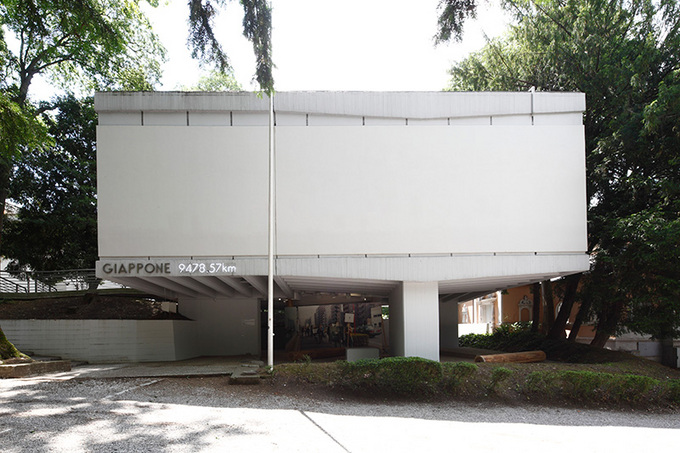
Photo: Keizo Kioku
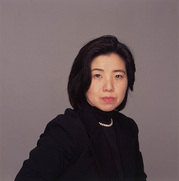 Yuko Hasegawa
Yuko Hasegawa
Chief Curator, Museum of Contemporary Art Tokyo
After graduating from Kyoto University in 1979, Hasegawa completed postgraduate studies at Tokyo University of the Arts graduate school. She has worked at the Contemporary Art Gallery of Art Tower Mito, Setagaya Art Museum, the 21st Century Museum of Contemporary Art, Kanazawa, where she organized many groundbreaking contemporary art exhibitions. She also trained at the Whitney Museum of American Art. Since 2006, she has been a professor at the Department of Art Science, Faculty of Art and Design, Tama Art University, and researcher at the university's Institute for Art Anthropology. She has also held her current position at the Museum of Contemporary Art Tokyo since the same year. Hasegawa served as a curator for a number of art exhibitions including the Istanbul Biennial in 2001 and Sharjah Biennial in 2013. Publications include Curation: chi to kansei wo yusaburu chikara (Curation: Power that Stirs Intelligence and Emotions), Naze? kara hajimeru gendai art (Why? Introducing Modern Art), and Onnanoko no tame no gendai art nyumon (Introduction to Modern Art for Girls). She has co-translated History of Modern Art by H. H. Arnason.
Keywords
- Photo
- Handicraft
- Architecture
- Literature
- Film
- Arts/Contemporary Arts
- Politics
- Education/Children
- Social Securities/Social Welfare
- International Exhibition
- China
- Japan
- United States
- Italy
- Netherlands
- Great East Japan Earthquake
- Museum of Contemporary Art Tokyo
- Venice Biennale
- Koki Tanaka
- Mika Kuraya
- Los Angeles
- Rotterdam
- Fukushima
Back Issues
- 2022.11. 1 Inner Diversity<3> <…
- 2022.9. 5 Report on the India-…
- 2022.6.24 The 48th Japan Found…
- 2022.6. 7 Beyond Disasters - …
- 2021.3.10 Crossing Borders, En…
- 2020.7.17 A Millennium of Japa…
- 2020.3.23 A Historian Interpre…
- 2019.11.19 Dialogue Driven by S…
- 2019.10. 2 The mediators who bu…
- 2019.6.28 A Look Back at J…











